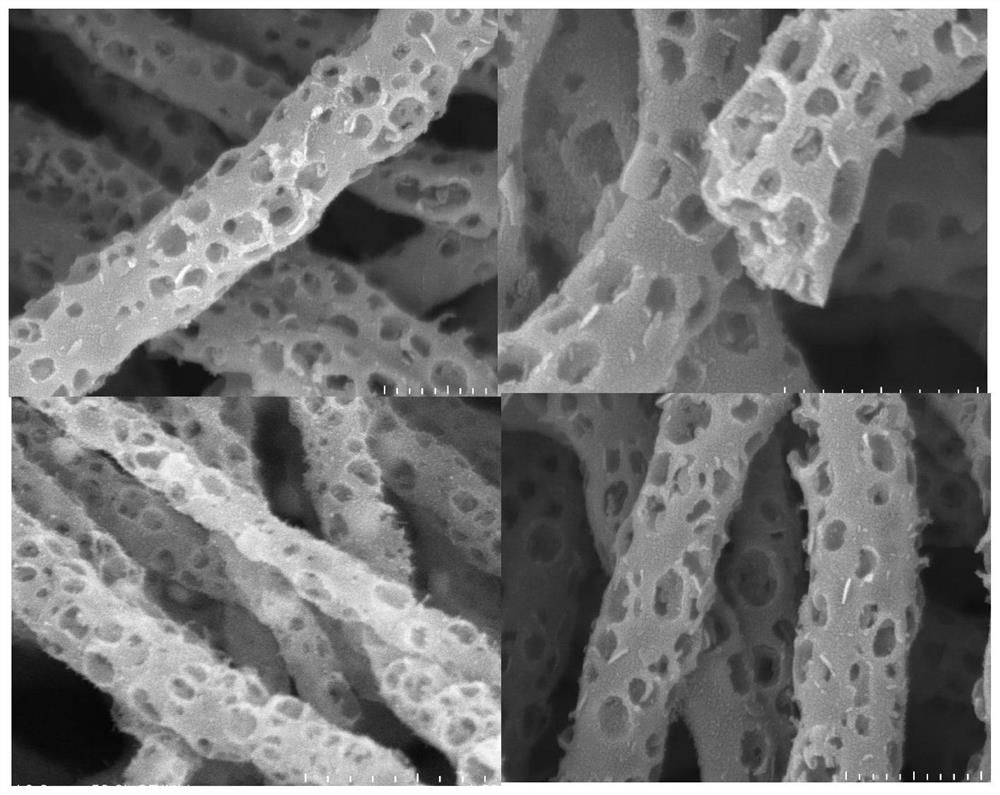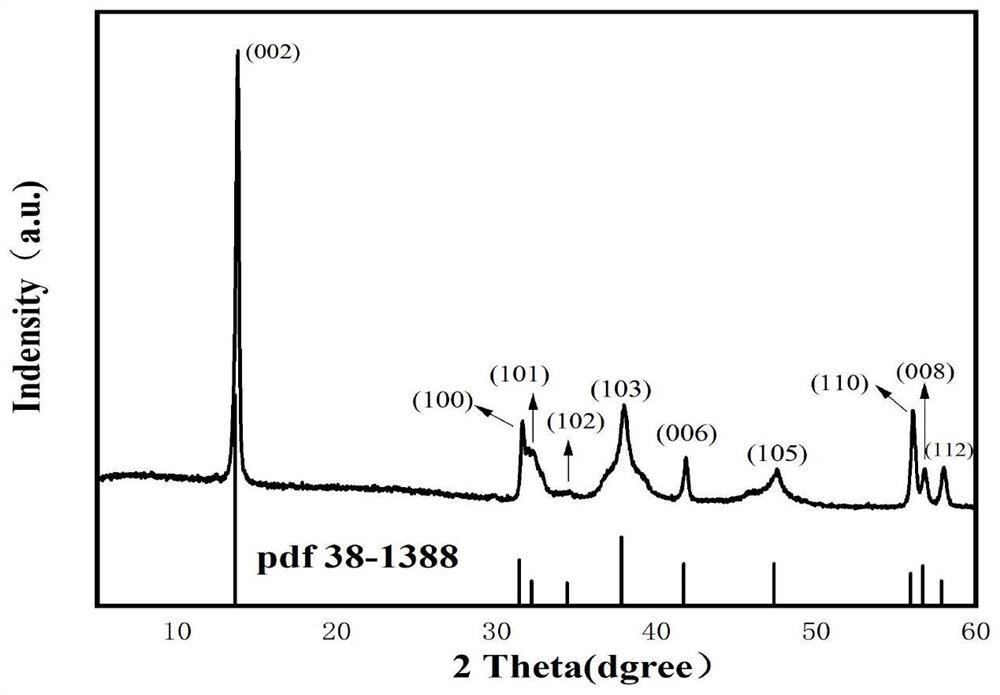Sodium-ion battery negative electrode material, preparation method thereof and sodium-ion battery negative electrode
A technology for sodium ion batteries and negative electrode materials, which is applied in battery electrodes, nanotechnology for materials and surface science, and negative electrodes, etc., can solve problems such as the conductivity, rate performance and cycle performance of sodium ion batteries need to be improved. Improve rate performance and charge and discharge capacity, excellent electrical conductivity, and the effect of expanding contact area
- Summary
- Abstract
- Description
- Claims
- Application Information
AI Technical Summary
Problems solved by technology
Method used
Image
Examples
Embodiment 1
[0045] The present embodiment 1 provides the first negative electrode material for sodium ion batteries, comprising the following steps:
[0046] Step 1. Weigh 1.5g of PVP, 4g of PTFE emulsion, and 1.2g of ammonium metatungstate, dissolve them in 15ml of distilled aqueous solution and magnetically stir for 12 hours to form a uniform milky white solution to obtain a carbon nanofiber precursor solution;
[0047] Step 2. Put the carbon nanofiber precursor solution prepared in step 1 into a 10ml syringe as a spinning solution, apply a voltage of 10kV, collect a distance of 12cm, and inject the solution at a rate of 0.02mm / min through electrospinning technology. silk for 8 hours, followed by drying in a vacuum oven for 2 hours to obtain carbon nanofibers;
[0048] Step 3. Transfer the carbon nanofiber prepared in step 2 into a high-temperature tube furnace, and heat it from room temperature to 250° C. for 1 hour at a heating rate of 2° C. / min in an air atmosphere to obtain a pre-ox...
Embodiment 2
[0051] This embodiment 2 provides the second negative electrode material for sodium ion batteries, comprising the following steps:
[0052] Step 1. Dissolve 1.5g of PVP, 4g of PTFE emulsion, and 1.5g of ammonium metatungstate in 15ml of distilled water and stir for 12 hours to form a uniform milky white solution to obtain a carbon nanofiber precursor solution;
[0053] Step 2. Put the carbon nanofiber precursor solution prepared in step 1 into a 10ml syringe as a spinning solution, apply a voltage of 14kV through electrospinning technology, collect a distance of 12cm, and inject the solution at a rate of 0.05mm / min. Spinning for 8 hours, followed by drying in a vacuum oven for 2 hours to obtain carbon nanofibers;
[0054] Step 3. Transfer the carbon nanofiber prepared in step 2 into a high-temperature tube furnace, and heat it from room temperature to 250° C. for 1 hour at a heating rate of 2° C. / min in an air atmosphere to obtain a pre-oxidized fiber film;
[0055] Step 4, t...
Embodiment 3
[0057] This embodiment 3 provides the third negative electrode material for sodium ion batteries, comprising the following steps:
[0058] Step 1. Dissolve 1.5g of PVP, 6g of PTFE emulsion, and 1.2g of ammonium metatungstate in 15ml of distilled aqueous solution and stir for 12 hours to form a uniform milky white solution to obtain a carbon nanofiber precursor solution;
[0059] Step 2. Put the carbon nanofiber precursor solution prepared in step 1 into a 10ml syringe as a spinning solution, apply a voltage of 12kV through electrospinning technology, collect a distance of 12cm, and inject the solution at a rate of 0.02mm / min. Spinning for 8 hours, followed by drying in a vacuum oven for 2 hours to obtain carbon nanofibers;
[0060] Step 3. Transfer the carbon nanofiber prepared in step 2 into a high-temperature tube furnace, and heat it from room temperature to 250° C. for 1 hour at a heating rate of 2° C. / min in an air atmosphere to obtain a pre-oxidized fiber film;
[0061]...
PUM
| Property | Measurement | Unit |
|---|---|---|
| Aperture | aaaaa | aaaaa |
| Diameter | aaaaa | aaaaa |
| Aperture | aaaaa | aaaaa |
Abstract
Description
Claims
Application Information
 Login to view more
Login to view more - R&D Engineer
- R&D Manager
- IP Professional
- Industry Leading Data Capabilities
- Powerful AI technology
- Patent DNA Extraction
Browse by: Latest US Patents, China's latest patents, Technical Efficacy Thesaurus, Application Domain, Technology Topic.
© 2024 PatSnap. All rights reserved.Legal|Privacy policy|Modern Slavery Act Transparency Statement|Sitemap



